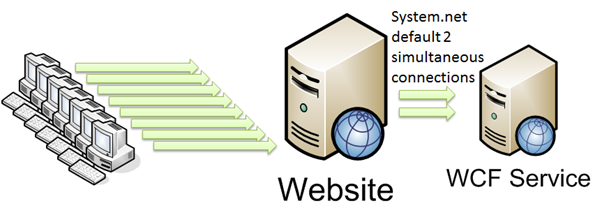Introduction
There are some simple configuration changes that you can make on machine.config and IIS to give your web applications significant performance boost. These are simple harmless changes but make a lot of difference in terms of scalability. By tweaking system.net changes, you can increase the number of parallel calls that can be made from the services hosted on your servers as well as on desktop computers and thus increase scalability. By changing WCF throttling config, you can increase the number of simultaneous calls WCF can accept and thus make most use of your hardware power. By changing ASP.NET process model, you can increase the number of concurrent requests that can be served by your website. And finally, by turning on IIS caching and dynamic compression, you can dramatically increase the page download speed on browsers and overall responsiveness of your applications.
System.net Changes
By default, system.net has two concurrent connections per IP allowed. This means on a webserver, if it’s calling WCF service on another server or making any outbound call to a particular server, it will only be able to make two concurrent calls. When you have a distributed application and your webservers need to make frequent service calls to another server, this becomes the greatest bottleneck.

Similarly, if you have a desktop application which is trying to make several webservice calls to the server, the system.net setting on the client computer’s machine.config will only allow two concurrent calls to your webserver. If your app makes many concurrent calls to your webserver, then this becomes the main bottleneck. No matter how fast your client app and server are, the two concurrent limit will kill it.
Read more: Codeproject
QR: 